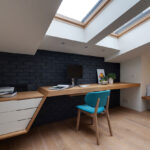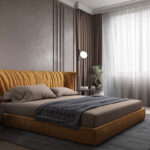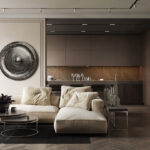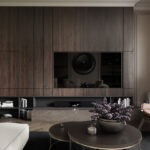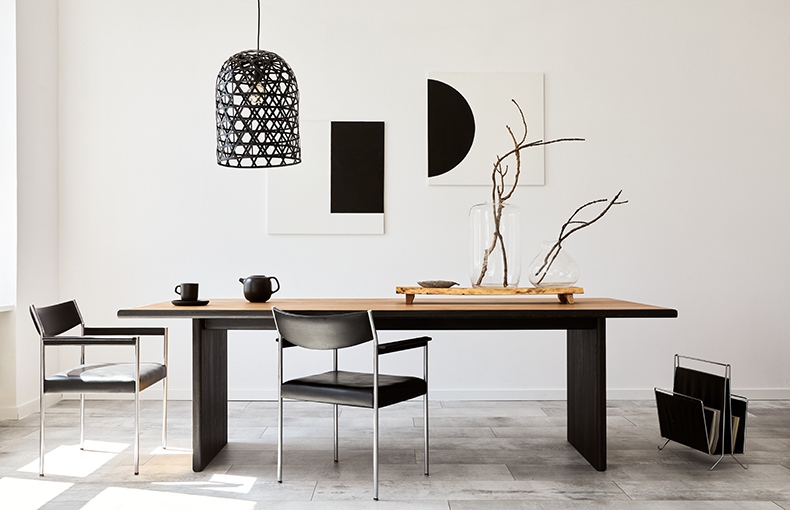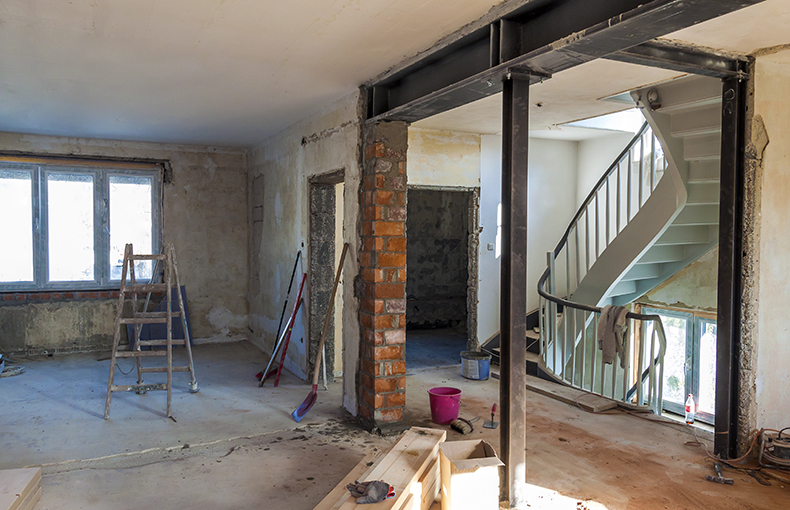How Scandinavian Design Principles Are Shaping Modern Homes
Table of Contents
- Introduction
- The Roots of Scandinavian Design
- Key Principles of Scandinavian Design
- Why Homeowners Are Choosing Scandinavian-Inspired Design
- Modern Interpretations and Global Influence
- Design Elements That Are Becoming Mainstream
- Scandinavian Design in Practice: A Case Study
- The Future of Home Design
- Conclusion
Scandinavian design has quietly transformed the way people around the world think about homes. Its influence is visible everywhere—from Pinterest boards to modern architectural projects and even in commercial spaces. Clean lines, natural materials, and a deep sense of functionality are some of its core traits. But how exactly are these principles shaping today’s homes, and why do homeowners and architects keep turning to them?
At Hothico Architects, we’ve seen a growing number of clients interested in designs that are simple yet impactful, warm yet minimal. The Scandinavian approach has helped us meet those expectations while creating spaces that feel grounded, purposeful, and timeless. In this post, we’ll explore the foundational principles of Scandinavian design, how they’re being adopted in modern homes, and what makes them so relevant today.
The Roots of Scandinavian Design
Scandinavian design comes from the Nordic countries—Denmark, Sweden, Norway, Finland, and Iceland. It took shape in the early 20th century but gained global attention during the 1950s. The driving idea behind it was that beautiful, functional design should be available to everyone, not just the elite.
The region’s long, dark winters meant that homes needed to be light-filled, warm, and practical. This influenced everything from furniture to lighting to the layout of homes. What started as a regional style became a global philosophy, resonating with those seeking balance between form and function.
Key Principles of Scandinavian Design
To understand how this design approach is shaping modern homes, we need to break down its core principles:
1. Function First
One of the main pillars of Scandinavian design is functionality. Every element—whether a chair, light fixture, or kitchen layout—is designed to serve a purpose. There’s no excess, no unnecessary ornamentation.
This has become increasingly relevant as homes get smaller and people prioritize utility over decoration. At Hothico Architects, we frequently design spaces where every inch is carefully thought out. From hidden storage in staircases to built-in furniture that adapts to the room’s needs, the Scandinavian influence pushes us to think smarter about space.
2. Simplicity in Form
Scandinavian homes are known for their clean, straight lines and uncluttered spaces. The design avoids complex shapes or overly decorative details. The simplicity is not about being boring—it’s about creating calm, open environments that promote peace and clarity.
In our recent projects, especially in urban settings, simplicity in form helps balance the chaos of city life. Clients often seek spaces that allow them to unwind and disconnect, and Scandinavian design answers that need without trying too hard.
3. Connection to Nature
Natural materials like wood, stone, and wool are often found in Scandinavian interiors. They reflect the region’s deep respect for nature. Large windows bring in light and offer views of the outdoors, while earthy tones create harmony between inside and out.
This approach resonates strongly in India too, where people are becoming more environmentally conscious and want homes that feel connected to the natural world. At Hothico Architects, we’ve begun using more natural textures and finishes—local wood, linen fabrics, and organic surfaces—to achieve that connection.
4. Light as a Design Element
Light is central to Scandinavian design. Because Nordic countries experience long months of darkness, homes are designed to capture and amplify whatever light is available. That means pale color schemes, large windows, sheer curtains, and reflective surfaces.
This philosophy is now widely adopted even in sunnier countries. Light enhances a space’s openness and warmth. In Indian homes, we often balance this idea with local considerations—using shaded skylights or smart window placements to maximize daylight without adding heat.
5. Minimalism with Meaning
While minimalism is a buzzword today, Scandinavian design gives it depth. It’s not about owning less for the sake of trends. It’s about removing distractions and surrounding yourself only with what adds value to your daily life.
This principle influences more than just furniture—it shapes entire floor plans. We often design homes with fewer, multi functional rooms rather than sprawling layouts. Open-plan living, fewer hallways, and flexible spaces are all part of this thinking.
Why Homeowners Are Choosing Scandinavian-Inspired Design
So, why has this regional style become a global favorite? It offers a lifestyle that many people aspire to—calm, thoughtful, and connected.
A Solution to Modern Overload
Today’s world is busy and overstimulating. Scandinavian design brings a sense of relief. It’s not about trends, it’s about longevity. The simple, neutral tones and thoughtful arrangements help people reset the pace of their day-to-day lives.
Works for Small and Big Spaces
Whether it’s a compact apartment or a large villa, the principles adapt beautifully. In fact, smaller homes benefit the most. Scandinavian design makes small spaces feel bigger, brighter, and more useful.
Aligns with Sustainable Living
As sustainability becomes a key concern, people want homes that consume less energy, use fewer synthetic materials, and promote well-being. Scandinavian design is inherently low-impact and durable. At Hothico Architects, we’ve seen more clients requesting reclaimed wood, passive design elements, and modular furniture—all staples of this approach.
Modern Interpretations and Global Influence
While the original Scandinavian design is rooted in its geographic context, it has evolved to blend with local cultures around the world. Designers and architects are now combining it with other styles to suit specific lifestyles and climates.
Scandinavian + Indian Fusion
In India, the fusion of Scandinavian design with traditional materials and spatial planning works well. Think teak wood furniture with Nordic silhouettes, or jute rugs paired with pale walls and clean floors. At Hothico Architects, we’ve successfully delivered homes that mix Scandinavian clarity with Indian warmth.
Smart Homes Meet Nordic Design
Modern homes are becoming smarter, but that doesn’t mean they should look like machines. Scandinavian design balances technology with subtle aesthetics. Hidden charging stations, voice-controlled lighting, and modular furniture that accommodates gadgets are all being designed to blend in, not stand out.
Design Elements That Are Becoming Mainstream
Here are some of the most common Scandinavian design features that are showing up in homes around the world:
Neutral Color Palettes
White, grey, beige, and soft blues dominate Scandinavian spaces. These shades reflect light and create a calming base. Color pops are rare but intentional—often added through art, cushions, or plants.
Open Floor Plans
Walls are minimized to allow seamless flow between kitchen, living, and dining areas. This open layout encourages togetherness while maintaining visual continuity.
Wooden Accents
Light-toned woods like ash and pine are staples. They’re used in flooring, furniture, ceilings, and even lighting fixtures to add texture and warmth.
Textural Contrast
Since the color palette is minimal, texture plays a key role. Soft throws, woolen rugs, leather chairs, and woven baskets add visual interest without clutter.
Greenery
Indoor plants aren’t just decorative—they bring life into the space. A single potted plant in a room often does more for the vibe than an elaborate arrangement.
Scandinavian Design in Practice: A Case Study
One of our recent projects at Hothico Architects involved a young couple looking to design their first home. They wanted it to feel modern, easy to maintain, and relaxing—without it looking “too cold” or “too styled.”
We started by designing an open floor plan with large windows facing the garden. We used lime-washed walls, exposed concrete ceilings, and oak wood floors. The furniture was custom-built using simple shapes and natural fabrics. Storage was integrated seamlessly—under benches, behind panels, within staircases.
For lighting, we chose pendant fixtures with matte finishes and added diffused LED strips along shelves. We brought in indoor plants not just in pots but also as hanging elements and green walls. The final result was a space that felt honest, balanced, and deeply personal—achieved entirely through Scandinavian principles adapted to an Indian context.
The Future of Home Design
Scandinavian design continues to inspire a shift away from fast interiors and toward intentional living. As people grow more conscious of how their surroundings affect their mental and physical well-being, the appeal of this design style will likely deepen.
At Hothico Architects, we believe that good design doesn’t have to shout. It should serve, adapt, and last. Scandinavian design offers that blueprint—where design isn’t just seen, it’s felt.
Conclusion
Scandinavian design has gone from being a regional trend to a global standard for modern, mindful living. Its focus on function, simplicity, and nature resonates deeply in a world seeking clarity and sustainability.
For homeowners, it means living in spaces that aren’t just beautiful but also livable. For architects and designers, it offers a framework to create homes that make everyday life easier and better.
At Hothico Architects, we continue to draw from these principles—not to replicate, but to reinterpret. We believe the best homes are those that reflect the people living in them, and Scandinavian design gives us the tools to build that connection—one thoughtful detail at a time.


